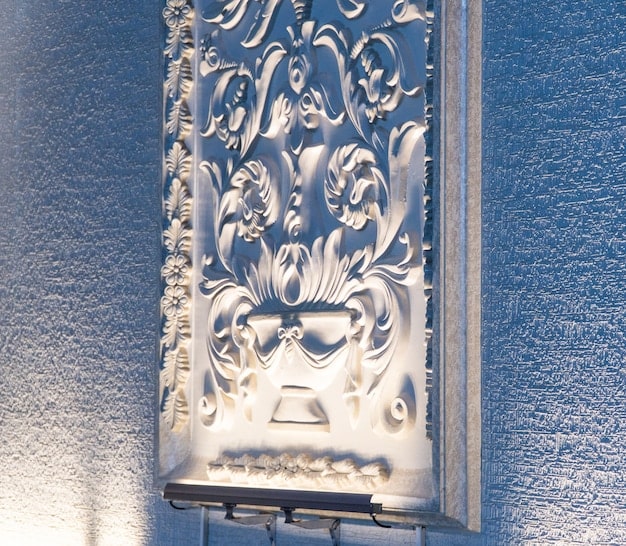Rehabilitation Tax Credit 2025: Restore Buildings & Reduce Taxes

The Rehabilitation Tax Credit offers significant financial incentives for restoring historic buildings in the US, potentially reducing your tax liability in 2025 and beyond by encouraging the preservation and revitalization of valuable historical assets.
Are you planning to restore a historic building? The Rehabilitation Tax Credit: Restoring Historic Buildings and Reducing Your Tax Liability in 2025 could be a game-changer for your finances. Learn how to leverage this powerful incentive for significant tax savings.
Understanding the Rehabilitation Tax Credit
The Rehabilitation Tax Credit, often referred to as the Historic Tax Credit, is a federal incentive designed to encourage the restoration and preservation of historic buildings. It provides a direct reduction in your tax liability for qualified rehabilitation expenses.
This credit is not just for large corporations; individual property owners can also benefit. Understanding the intricacies of this credit can unlock substantial savings while contributing to the preservation of America’s architectural heritage.
Who is Eligible for the Rehabilitation Tax Credit?
Eligibility depends on several factors, including the type of property, the nature of the rehabilitation work, and adherence to specific guidelines set by the National Park Service and the IRS.
What Types of Properties Qualify?
Generally, the building must be a certified historic structure, meaning it is listed in the National Register of Historic Places or located in a registered historic district and certified as contributing to the historical significance of that district.

The Rehabilitation Tax Credit offers a powerful incentive to preserve our nation’s architectural heritage, breathing new life into historic structures. It’s a win-win: property owners can save money, and communities can retain their unique character.
How the Rehabilitation Tax Credit Works
The Rehabilitation Tax Credit provides a tax credit equal to 20% of qualified rehabilitation expenses (QREs) for certified historic structures. Understanding the mechanics of the credit is crucial for maximizing its benefits.
This means that for every dollar spent on qualified improvements, you can reduce your tax bill by twenty cents. This can significantly offset the costs associated with restoring a historic building.
- Calculating the Credit: The credit is calculated based on qualified rehabilitation expenses.
- Claiming the Credit: The credit is claimed on Form 3468, Investment Credit, and is subject to certain limitations.
- Recapture Rules: Be aware that recapture rules may apply if the property is disposed of or ceases to be a qualifying historic structure within five years of the rehabilitation being completed.
The Rehabilitation Tax Credit is a valuable tool for historic preservation, offering a substantial financial incentive to those who invest in restoring these valuable landmarks. Carefully planning and documenting your project is key to taking full advantage of this credit.
Qualified Rehabilitation Expenses (QREs) Defined
Determining what qualifies as a Qualified Rehabilitation Expense (QRE) is paramount to maximizing your Rehabilitation Tax Credit. Not all renovation costs are eligible, so understanding the IRS’s definition is essential.
Generally, QREs include costs directly related to the rehabilitation of the historic building, such as architectural and engineering fees, site survey fees, legal expenses, insurance premiums, construction period interest, and construction costs.

- What’s Included: Labor costs, materials and supplies, and certain equipment expenses.
- What’s Excluded: The cost of acquiring the building, the cost of enlarging the building, and expenses related to new construction.
- Important Note: Expenses must be reasonable and directly attributable to the rehabilitation of the existing historic structure.
Understanding the nuances of QREs is essential for maximizing your Rehabilitation Tax Credit. Consulting with a tax professional or historic preservation consultant can ensure you’re capturing all eligible expenses and complying with IRS guidelines.
Navigating the Approval Process
Securing approval for the Rehabilitation Tax Credit involves a multi-step process that requires careful planning and documentation. Working with experienced professionals is essential for navigating this complex process.
The process typically begins with submitting an application to the State Historic Preservation Office (SHPO) and the National Park Service (NPS). These agencies review the proposed rehabilitation work to ensure it meets the Secretary of the Interior’s Standards for Rehabilitation.
Submitting Your Application
The application, known as the Historic Preservation Certification Application, is divided into three parts.
Meeting the Secretary of the Interior’s Standards
Adhering to these standards is critical for obtaining certification and claiming the tax credit. The standards emphasize preserving the historic character of the building during the rehabilitation process. The building’s historic materials and features must be retained and preserved, and any new additions or alterations must be compatible with the building’s historic character.
Navigating the approval process for the Rehabilitation Tax Credit can be complex, but with careful planning and expert guidance, you can successfully secure approval and unlock significant tax savings while preserving our nation’s architectural treasures.
Planning for 2025: Key Considerations
As you plan for a historic building rehabilitation project in 2025, several key considerations can help maximize your Rehabilitation Tax Credit and ensure a smooth process. Proactive planning can make all the difference.
Stay informed about potential legislative changes to the Rehabilitation Tax Credit. Congress has modified the credit in the past, so keeping abreast of any updates is crucial. Take the time to research and select experienced architects, contractors, and consultants who are familiar with historic preservation projects and the requirements of the Rehabilitation Tax Credit.
- Stay Informed: Track legislative changes that could impact the credit.
- Assemble a Qualified Team: Partner with experienced professionals.
- Document Everything: Maintain thorough records of all expenses.
By planning ahead and staying informed, you can position yourself to take full advantage of the Rehabilitation Tax Credit in 2025 and contribute to the preservation of historic buildings for future generations.
Maximizing Your Rehabilitation Tax Credit
To truly maximize the Rehabilitation Tax Credit, you need to go beyond basic compliance and implement strategies to optimize your project. Focusing on key details can lead to greater tax savings.
Consider phasing your rehabilitation work to align expenses with your tax planning. This can help you manage your tax liability more effectively. Explore opportunities to combine the Rehabilitation Tax Credit with other federal, state, or local incentives for historic preservation. Stacking credits can significantly reduce your overall project costs.
Strategic Planning
Develop a comprehensive rehabilitation plan that prioritizes eligible expenses and adheres to the Secretary of the Interior’s Standards for Rehabilitation.
Expert Advice
Work closely with a qualified tax advisor and historic preservation consultant throughout the project to ensure compliance and identify potential savings.
By implementing these strategies, you can maximize your Rehabilitation Tax Credit and achieve a successful and financially rewarding historic preservation project. Remember: Careful planning, expert advice, and diligent documentation are your keys to success.
| Key Point | Brief Description |
|---|---|
| 🏛️ Eligibility | Certified historic structures qualify for the credit. |
| 💰 Credit Amount | Tax credit equals 20% of qualified rehabilitation expenses. |
| 📝 QREs | Include architectural fees, construction costs, etc. |
| 📅 Planning | Plan projects strategically & stay informed about legislative changes. |
FAQ
▼
The primary goal is to encourage the preservation and revitalization of historic buildings, providing an incentive for property owners to invest in their restoration.
▼
Qualified Rehabilitation Expenses (QREs) typically include architectural fees, engineering costs, construction labor, and materials directly related to the rehabilitation.
▼
The building must be listed in the National Register of Historic Places or located in a registered historic district and certified as contributing to the historical significance.
▼
Recapture rules may apply, meaning you may have to repay a portion of the tax credit you claimed if the property is sold within five years.
▼
You can find comprehensive information on the National Park Service website, IRS publications, and by consulting with tax professionals and historic preservation consultants.
Conclusion
The Rehabilitation Tax Credit: Restoring Historic Buildings and Reducing Your Tax Liability in 2025 presents a golden opportunity for property owners looking to preserve historic structures while enjoying significant tax benefits. By understanding the eligibility requirements, navigating the approval process, and strategically planning your project, you can unlock substantial savings and contribute to the preservation of America’s architectural heritage.





